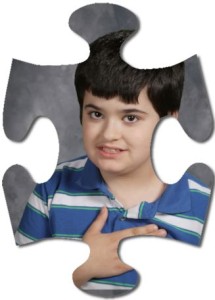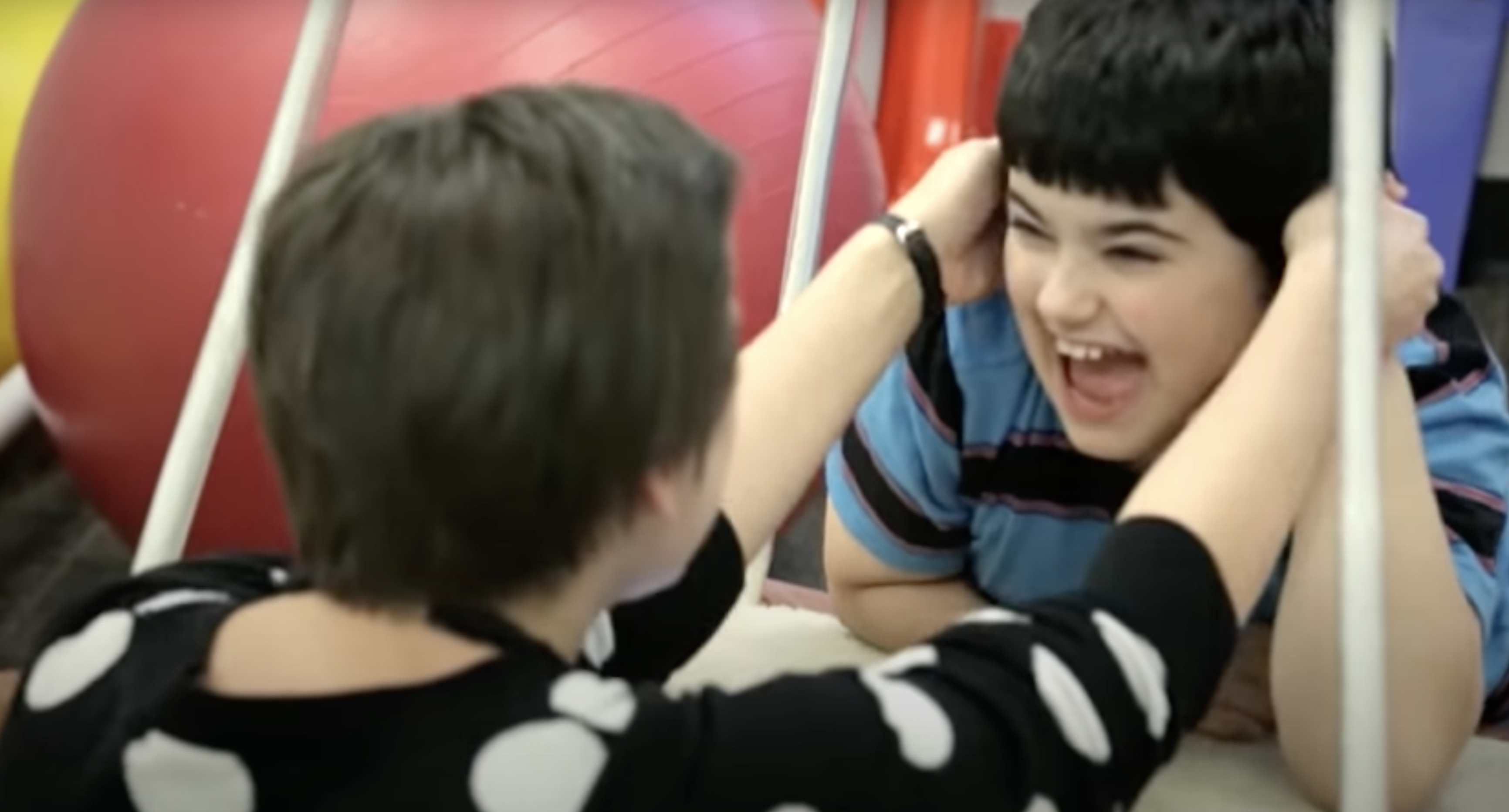This post was written ten years ago. A lot has changed since then, but we continue to reap the benefits of the early intervention and training Connor received after his diagnosis.
One of the realizations we had to come to as parents was that we didn’t lose our son to autism. Autism muzzled him, muffled his voice, clouded his head, and put a barrier between him and our world. As devastating as that was, I’m constantly reminded that there is a little boy still in there. He laughs, he cries, he eats like a horse. He loves his daddy and interacts with me as best as he can. We have a pretty good time together.
When we determined that something was wrong with Connor’s development, we immediately sought help. One of the best resources we found has been Eastern Illinois University’s Speech, Language, and Hearing Clinic. The instructors are incredible, and the student clinicians receive great training with excellent oversight. Connor gets outstanding care there and many growth opportunities.
Alphabet Blocks
With growth comes success. As we began therapy, I quickly found myself looking for any glimmer of hope we could build on. As opportunities to communicate were given to Connor, I started looking for more intentionality in what he was already doing.
When he was about three years old, I watched Connor play with wooden alphabet blocks. Connor loved to line things up, making trains of books, blocks, or anything. It was his way of creating order in his world. Something about how he lined those blocks up caught my eye–they were all right-side up.
The “A” was not inverted, the “D” was not lying on its side, and when I turned the “Q” upside down, he spotted it immediately and corrected it. They weren’t in alphabetical order, but Connor definitely understood the way the letters would be oriented.
A few weeks later, I watched him thumbing through one of his books. Again, it was right-side up, and he was paying as much attention to the letters as the pictures. Could he be understanding them somehow?

KISS
I took a piece of paper and, with a bold Sharpie marker, wrote the word “KISS.” I got on my knees in front of him and, making sure not to pucker up or give any visual cues, I let him read it. He looked at the paper and then back at me and kissed me. “Surely it was a fluke,” I thought. So I had his sister do the same. He kissed her. Then we tried it out with his mother. Again, he kissed her. What was going on in that head?
A few days later I had created a series of flashcards that I laminated and stuck on the side of our refrigerator with magnets. They were simple cards that would communicate the essentials. “I want” was color-coded pink to stand out from the others. “More” was included since it had been essential in his communication therapy. Along with them were cards like “to go to the park,” “tickles,” “candy,” “drink,” and “hugs.” Connor used them flawlessly, over and over again. But he soon grew bored with them. It wasn’t easy finding a way to hold his interest in communication.
In therapy, he began matching picture cards with word cards with more than 90% accuracy. Even better, he seemed to enjoy the challenge and the chance to show off. Connor truly desires interaction with others.
It was essential to find a means of communication that Connor would willingly use and that would grow with him. In 2010, the introduction of Apple’s iPad and new apps meant new opportunities for Connor and others with communication issues. Thanks to a generous gift from some wonderful friends, Connor now had a voice. Since then we’ve focused on learning to communicate his needs through these new tools. We also have a lot of fun with it.
COOKIE!
A few weeks ago, while on a road trip, Connor reached for the cookie he had been given at a lunch stop ( being cute means free cookies). I stopped him and said, “You have to ask for it,” just like you would correct any child. Connor reached for his iPad, opened his Proloquo2Go communication app, and, through a series of buttons, said, “I want dessert, cookie. Cookie! Cookie!” He then used sign language to say “please” and got his cookie.
At a noisy family gathering Connor was noticeably overwhelmed and upset at the level of activity around him. I handed him my own iPad, and he navigated through a series of screens until he found his communication software. With a few clicks, he voiced his concern rather than acting out his frustrations. “I want to go home. When are we going?” Connor asked. Since we couldn’t leave yet, I took him outside for some one-on-one time.
On any given day, I get my share of “Hello’s” and “Good-bye’s” and outstanding requests like, “Tickle me, neck! Tickle me, leg!” Those long nights of holding him down and applying pressure to his arms and legs are gone, and instead, Connor will ask, “Open, squeeze.” No one taught him to do that. He came up with it on his own. It’s his way of saying, “I need you, Dad.”
The beautiful truth is that when the challenges are this big, you get daily victories.
It’s a reminder that behind those bright eyes and big smile is a child who desperately wants to be part of my world. He’s willing to overcome the barriers that keep us apart to communicate with me. We may not always understand each other, and that frustrates us both. But I have my son, and he has his family. That’s all that really matters.

I’m convinced that Connor will have many more breakthroughs. You and Trish are wonderful parents and Connor is surrounded by people that love him. Thanks for sharing with us Bret!